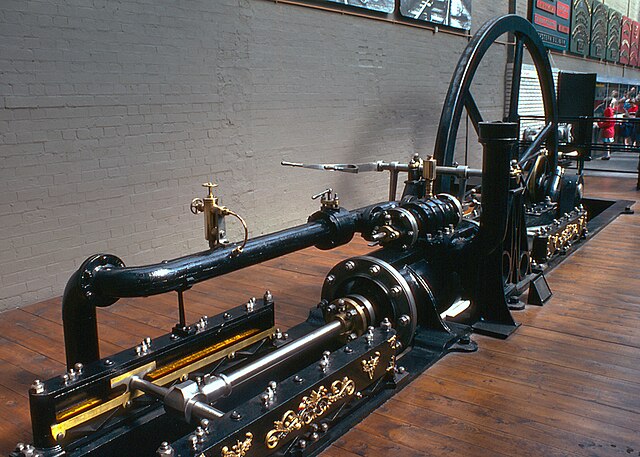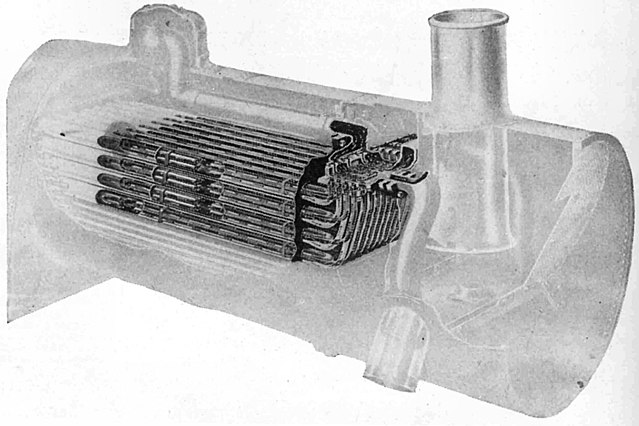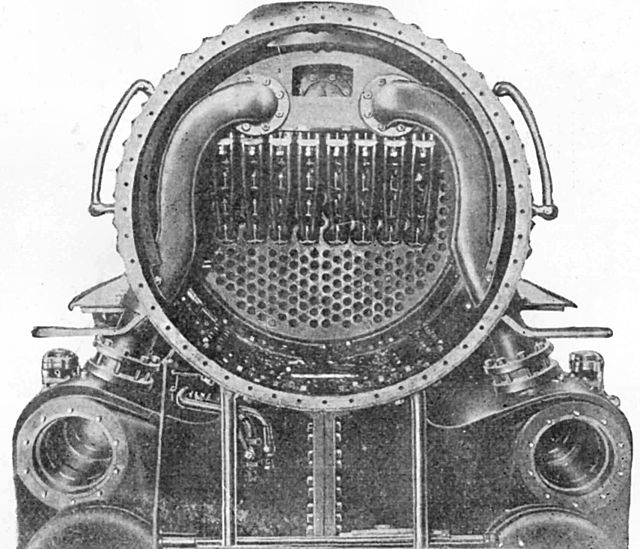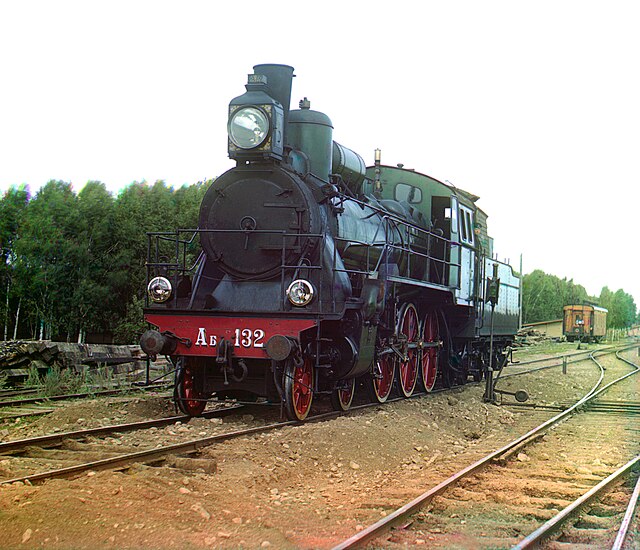Piston valve (steam engine)
Piston valves are one form of valve used to control the flow of steam within a steam engine or locomotive. They control the admission of steam into the cylinders and its subsequent exhausting, enabling a locomotive to move under its own power. The valve consists of two piston heads on a common spindle moving inside a steam chest, which is essentially a mini-cylinder located either above or below the main cylinders of the locomotive.
Diagram of cylinder and piston valve. The valve is next opened by moving it to the right, allowing the clear space in the middle of the valve to align with the channel in the cylinder above it.
The Swannington incline winding engine of 1833 incorporated a piston valve
A superheater is a device used to convert saturated steam or wet steam into superheated steam or dry steam. Superheated steam is used in steam turbines for electricity generation, in some steam engines, and in processes such as steam reforming. There are three types of superheaters: radiant, convection, and separately fired. A superheater can vary in size from a few tens of feet to several hundred feet.
General arrangement of a superheater installation in a steam locomotive.
Superheater viewed from the smokebox. Top centre is the superheater header, with pipes leading to cylinders. Tubes below feed steam into and out of the superheater elements within the flues. The stack and the damper have been removed for clarity.
Early color photograph from Russia taken by Sergey Prokudin-Gorsky in 1910 of steam locomotive with a superheater





